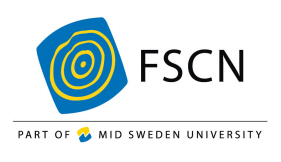Light-weight Structural Composites from Fibre-based Materials
The project Light-weight Structural Composites from Fibre-based Materials - Reliability-based Design, is a project within the KK Research Enviroment at Mid Sweden University.
Reduce energy and material
In the materials world, light-weighting is taking place at all fronts. This is because our sustainable society demands less energy, less material, and less water uses. For example, Boeing 777's tail section used to be made from aluminium, but was recently replaced with composites which are lighter, more durable, and more reliable at high altitudes. The result is that it cut the weight of tail section 8000 pounds by 15%, and drastically increased fuel economy. This is also true for packaging materials which are transported and consumed in our everyday life.
Cooperation with BillerudKorsnäs and SCA R&D
At Mid Sweden University, we recently launched a new project, "Light-weight Structural Composites from Fibre-based Materials" together with SCA R&D and BillerudKorsnäs. The project is financed by KK-stiftelsen for a three year period under the KK Research Environment. The project is aiming at developing light-weight composites used for packaging and structural applications from fibre-based materials.
The research focus
Our first quest is to investigate typical fibre-based materials, such as paper and board, from the point of durability and reliability. It is often misunderstood that strong materials are automatically durable and reliable in end-use. Our theoretical and experimental studies showed that they are not necessarily so, and also the materials exhibit far more variability that what routine strength tests can predict (Figure 1). "What really control such variability?" and "How to design new structures that imparts excellent reliability?" These are some of the research questions we are posing in our research. In our preliminary study some fibres exhibit very good durability, and some structure drastically reduces variability and thus reliability. We are trying to find new manufacturing conditions and converting conditions that will enhance durability and reliability of fibres as material, together with our industrial partners. Our quest has just started.

Fig. 1 The distribution of strength is typically bell-shaped and narrow, whereas lifetime under long-term loading has extreme variability and has a peak at a very short time.




